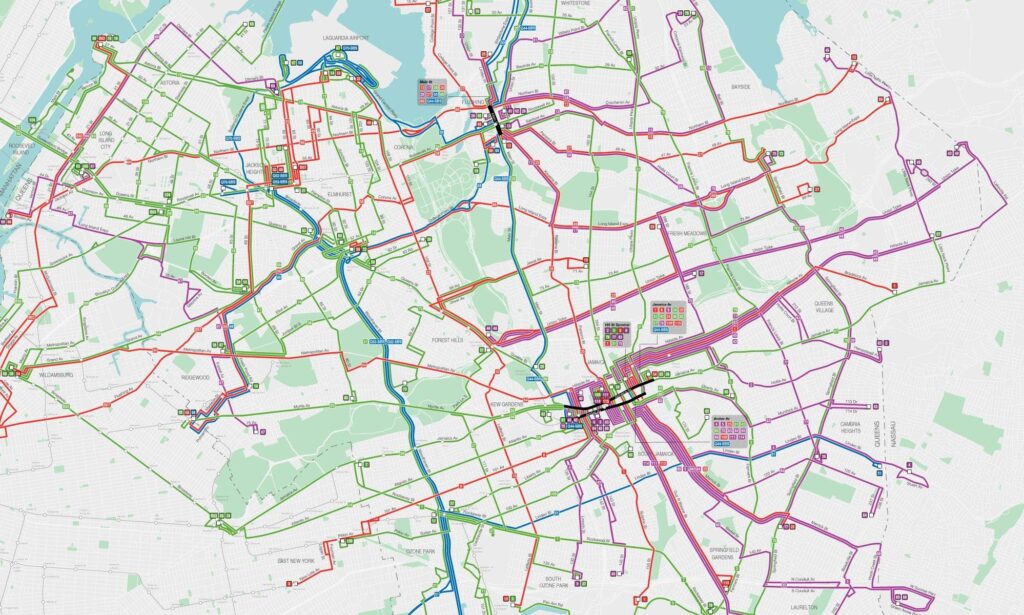Reimagining Queens Bus Routes: A Critical Look at the MTA’s Network Overhaul
Transparency and Community Involvement: A Missing Link
The Metropolitan Transportation Authority’s (MTA) initiative to revamp the Queens bus system aims to enhance transit efficiency and connectivity. However, the rollout has been marred by concerns over insufficient transparency and limited community engagement. Many residents and local advocacy groups feel excluded from meaningful participation, perceiving that decisions were largely finalized before public input was solicited. This approach has generated skepticism, especially among vulnerable populations such as seniors and low-income communities, who worry that the redesign prioritizes speed over accessibility.
Key issues raised by the community include:
- Scarce opportunities for substantive public consultation prior to implementation
- Unclear methodology behind route modifications and service frequency changes
- Lack of comprehensive disclosure regarding alternative plans or impact analyses
| Area of Concern | Community Feedback | MTA’s Response |
|---|---|---|
| Public Forums | Short notice and limited accessibility | Expanded online engagement efforts |
| Route Data Transparency | Insufficient detailed impact reports | Release of summary impact documents |
| Incorporation of Feedback | Community input often disregarded | Implementation of follow-up surveys |
Despite the MTA’s assurances of ongoing adjustments based on rider feedback, the pace of responsiveness and inconsistent communication have hindered trust-building. To bridge this divide, the agency must commit to more inclusive dialogue and transparent decision-making processes that genuinely reflect the needs of Queens’ diverse transit users.
Assessing Accessibility and Travel Time Changes for Riders
While the MTA promotes the redesign as a step toward faster and more reliable service, many long-term commuters express apprehension about the practical effects on their daily travel. Accessibility remains a pressing concern, particularly for elderly passengers and those with disabilities. Although plans include upgrading bus stops and deploying accessible vehicles, the increased distances to new stops and the necessity for additional transfers may inadvertently reduce mobility and independence for these groups.
Travel time projections reveal a mixed picture, with some routes experiencing longer journeys post-redesign, especially during off-peak hours. The following table compares current average travel durations with estimated times after the changes on select routes:
| Route | Current Average Duration | Estimated Duration After Redesign | Difference |
|---|---|---|---|
| Q60 | 35 minutes | 42 minutes | +7 minutes |
| Q12 | 28 minutes | 33 minutes | +5 minutes |
| Q25 | 23 minutes | 20 minutes | -3 minutes |
- Increased transfers: More indirect routes may compel riders to change buses more often.
- Service reductions: Some neighborhoods could face diminished late-night service, impacting shift workers and students.
- Longer wait times: Decreased bus frequency on certain lines may lead to extended waiting periods.
Equity Challenges: Who Bears the Brunt?
Despite the MTA’s focus on streamlining routes, the redesign raises significant equity concerns. Communities that depend heavily on bus transit—often low-income and minority populations—face potential setbacks in access to essential services and employment centers. Southeast Queens, in particular, is projected to see a substantial increase in average walking distances to bus stops, which could exacerbate economic and social hardships.
Specific equity issues include:
- Reduced service during off-peak hours, disproportionately affecting seniors and workers with nontraditional schedules.
- Limited engagement with the most impacted neighborhoods, leading to decisions that overlook localized needs.
- Insufficient accommodations for riders with disabilities, such as a shortage of low-floor buses on certain routes.













